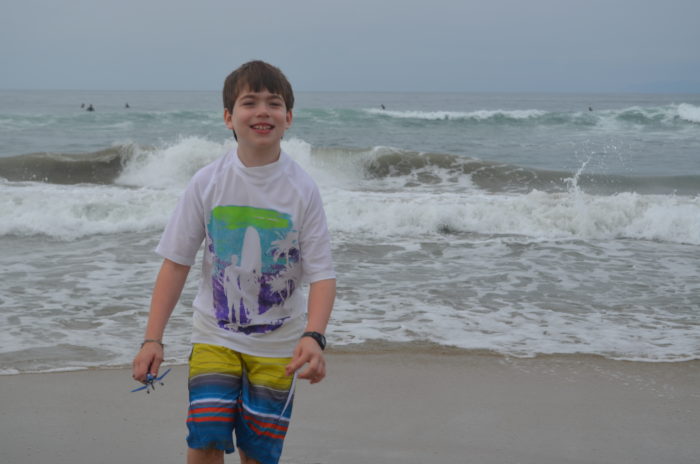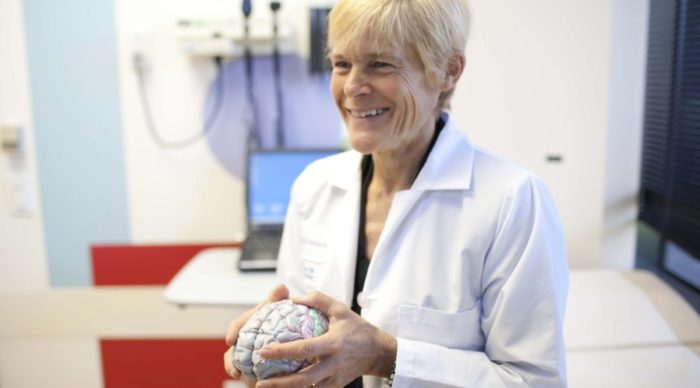Gabriel Lucak had been a healthy, normally developing child until age 3, when he suddenly began experiencing seizures.

What began as a tonic-clonic seizure in May 2008 rapidly progressed to include myoclonic, atonic, and atypical absence seizures. On his worst days, Gabriel experienced up to 50 seizures a day.
“It was like living out a surreal nightmare,” said his mother, Nicole.
Gabriel was initially diagnosed with myoclonic-astatic epilepsy, also known as Doose syndrome. His seizures were difficult to control, and doctors attempted many different treatments, including eight months on a ketogenic diet. During this time, Gabriel was hospitalized numerous times to modify his medication and control his seizures.
Searching for answers
A low point for the Lucak family came about nine months after the seizures began. While hospitalized for respiratory syncytial virus, Gabriel’s seizures increased significantly. An electroencephalogram (EEG) recorded seizures occurring about once a minute and a slowing brain wave frequency. Magnetic resonance imaging (MRI) revealed decreased brain volume. Gabriel’s health was rapidly deteriorating.
Joe and Nicole desperately began looking elsewhere for help, and in March 2009 found a beacon nearly 1,400 miles away in Dr. Mary Zupanc, a pediatric neurologist and one of the nation’s leading epileptologists, who was then practicing in Wisconsin.
Under Dr. Zupanc’s care, Gabriel was placed on a new treatment program. He stopped following the ketogenic diet and began taking a new antiepileptic medication. He underwent a two-week long-term video EEG monitoring study, which revealed he was experiencing a fifth type of seizure – tonic – during sleep.

A new diagnosis
Dr. Zupanc then knew that Gabriel’s epilepsy had evolved into a more severe form called Lennox-Gastaut syndrome (LGS). This rare type of epilepsy is marked by seizures that are difficult to control, and typically persist through adulthood.
In addition, Dr. Zupanc diagnosed Gabriel with cerebral folate deficiency, a rare metabolic condition, following a spinal tap and extensive testing on his cerebral spinal fluid. He immediately began taking a folinic acid supplement and following a strict dairy-free diet.
Under this new treatment plan, Gabriel was seizure-free within two months. A second spinal tap showed a normal level of folate, and another MRI had normal results. The Lucaks were thrilled.
“Gabriel could have suffered severe brain damage, or he might not have survived at all,” Nicole said. “That’s how critical it was for us to have found Dr. Zupanc when we did.”
A bright future
Today, Gabriel is an intelligent, creative and artistic 12-year-old who dreams of being a paramedic when he grows up.
He remains under Dr. Zupanc’s care, traveling from San Diego to the CHOC Neuroscience Institute and its level 4 epilepsy center for appointments and annual long-term EEG monitoring.
Gabriel is also under the care of Dr. Jose Abdenur, chief of CHOC’s metabolics disorders division. Gabriel, his younger brother, Nolan, and his parents have all participated in several research studies involving genetic testing for both epilepsy and cerebral folate deficiency.
Recently, Gabriel was weaned off the antiepileptic medication and continues to be seizure-free.
“He has the opportunity to live a full life in good health, thanks to an amazing series of events that led to experienced doctors, correct diagnoses and effective treatment,” Nicole said.

CHOC Hospital was named one of the nation’s best children’s hospitals by U.S. News & World Report in its 2025-26 Best Children’s Hospitals rankings and ranked in the neurology/neurosurgery specialty.




